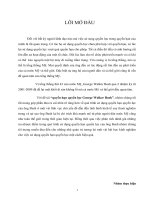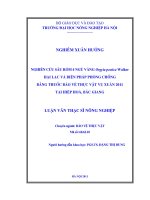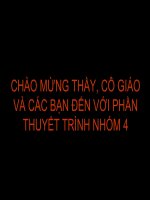Mosquitoes (Sally Walker )
Bạn đang xem bản rút gọn của tài liệu. Xem và tải ngay bản đầy đủ của tài liệu tại đây (5.13 MB, 51 trang )
by Sally M. Walker
THIS PAGE
INTENTIONALLY
LEFT BLANK
s Lerner Publications Company • Minneapolis
by Sally M. Walker
The photographs in this book are used with permission of: © Dwight R. Kuhn, pp. 4, 7, 11,
12, 13, 15, 19, 22, 27, 31, 34, 35, 48 (top); © David McNew/Getty Images, p. 5; Centers for
Disease Control and Prevention Public Health Image Library/James Gathany, pp. 6, 10, 17,
20, 23, 25, 28, 37, 38, 46; © Scott Camazine/Photo Researchers, Inc., p. 8; © Joel Sartore/
National Geographic/Getty Images, p. 9; © Nature’s Images/Photo Researchers, Inc., p. 14;
© Michael Durham/Visuals Unlimited, p. 16; © Wim van Egmond/Visuals Unlimited, p. 18;
© R.F. Ashley/Visuals Unlimited, p. 21; © Ken Preston-Mafham/PREMAPHOTOS/naturepl.com,
p. 24; © Hans Pfletschinger/Peter Arnold, Inc., p. 26; © age fotostock/SuperStock, pp. 29,
33; © G.I. Bernard/Photo Researchers, Inc., p. 30; © Dr. Robert Calentine/Visuals Unlimited,
p. 32; AP Photo/Ed Andrieski, p. 36; © Rick Poley/Visuals Unlimited, p. 39; Centers for Disease
Control and Prevention Public Health Image Library, pp. 40, 41; AP Photo/The Daily Oakland
Press, Doug Bauman, p. 42; AP Photo/Kevork Djansezian, p. 43; Agricultural Research Service,
USDA, p. 47; © David McNew/Getty Images, p. 48 (bottom).
Front cover: Agricultural Research Service, USDA.
Text copyright © 2009 by Sally M. Walker
All rights reserved. International copyright secured. No part of this book may be reproduced,
stored in a retrieval system, or transmitted in any form or by any means—electronic, mechanical,
photocopying, recording, or otherwise—without the prior written permission of Lerner Publishing
Group, Inc., except for the inclusion of brief quotations in an acknowledged review.
Lerner Publications Company
A division of Lerner Publishing Group, Inc.
241 First Avenue North
Minneapolis, MN 55401 U.S.A.
Website address: www.lernerbooks.com
Library of Congress Cataloging-in-Publication Data
Walker, Sally M.
Mosquitoes / by Sally M. Walker.
p. cm. — (Early bird nature books)
Includes index.
ISBN 978–0–8225–1375–9 (lib. bdg. : alk. paper)
1. Mosquitoes—Juvenile literature. I. Title.
QL536.W35 2009
595.77’2—dc22 2007044318
Manufactured in the United States of America
1 2 3 4 5 6 – PA – 14 13 12 11 10 09
978-0-7613-4641-8
Contents
Be a Word Detective 5
Chapter 1 The Mosquito 6
Chapter 2 Body Parts 10
Chapter 3 An Itchy Bite 19
Chapter 4 Growing Up 24
Chapter 5 Mosquito Danger 35
On Sharing a Book 44
A NOTE TO ADULTS
Learn More about
Mosquitoes
45
Glossary
46
Index
48
Can you find these words as you read about mosquitoes?
Be a detective and try to figure out what they mean.
You can turn to the glossary on page 46 for help.
abdomen insects proboscis
antennas labium pupa
compound eyes larvas siphon
egg raft molting stylets
insecticides palpus thorax
There is more than one way to form plurals of some words.
The word antenna has two possible plural endings—either
an e or an s. In this book, s is used when many antennas
are being discussed.
5
The Mosquito
It’s summertime. You have just settled
into bed. Suddenly, you hear a high-pitched
hum. EEEEE. Oh no, it’s a mosquito!
Chapter 1
This mosquito is
drinking blood from
a person’s hand.
What kind of animal
is a mosquito?
6
Mosquitoes are insects. Insects have hard
skeletons on the outside of their bodies. Adult
insects have six legs. Most insects have one or
two pairs of wings. Mosquitoes have one pair.
A dragonfly (right) tries to catch a mosquito.
Dragonflies are insects with two pairs of wings.
7
8
There are more than 2,500 species, or
kinds, of mosquitoes. They live all over the
world. Some mosquitoes live only in warm
places. Cold weather kills them. Other
mosquitoes live in cold places. The eggs of
mosquitoes that live in the Arctic can withstand
very cold winters. Common house mosquitoes
live almost everywhere people do.
The scientific name of the common house mosquito is
Culex pipiens.
9
Mosquitoes rest among leaves and in the
grass. They fly from their resting places to find
food or a mate. Females fly to find places to
lay their eggs.
Some species of mosquitoes are active in
the early morning or in the evening. Some are
active when it’s sunny. Others are active at
night or on cloudy days.
These mosquitoes were resting in the grass in Alaska.
They came out of the grass to feed.
10
Chapter 2
Mosquitoes have
three main body
parts. Do you know
what they are?
Body Parts
Like all insects, mosquitoes have three
main body parts. They are the head, the
thorax, and the abdomen (AB-duh-muhn).
11
A mosquito has two large eyes on its head.
They are compound eyes. Compound eyes are
made of many tiny lenses. A lens is the place
where light enters the eyes. A mosquito’s eyes
do not see objects clearly. But they easily sense
movements such as swatting hands or tails.
Mosquitoes have
two compound eyes.
Their tiny lenses
look very colorful in
this photo.
12
A mosquito has two antennas (an-TEH-
nuhz) on its head. Each antenna has hairs on
it. A male’s antennas have very long, feathery
hairs. A female has shorter and fewer hairs on
her antennas.
Antennas are used to hear and smell. A
male mosquito uses his antennas to listen for
the hum of a female’s wings.
A female mosquito
uses her thin
antennas to help her
find a blood meal.
13
A mosquito’s mouthparts are called a
proboscis (pruh-BAHS-kuhs). A proboscis has
several parts. Some are sharp and used for
biting. Others carry liquid to or from the bite.
A mosquito has a palpus on each side of
the proboscis. The palpi are used to touch and
taste. Some mosquitoes have palpi that are as
long as the proboscis.
This male mosquito has feathery antennas and long
palpi. Its proboscis sticks out from between the palpi.
14
The thorax is the second main part of
a mosquito’s body. It is behind the head. A
mosquito’s six legs are attached to its thorax.
Each leg has a foot with two claws. They
help the mosquito cling to walls, plants, and
animals.
This mosquito is clinging to a plant with the claws
on its feet.
15
A pair of wings is also attached to the
thorax. Each wing has thin lines called veins.
Veins carry blood to the wings. They help
stiffen the wings.
A mosquito folds back its two long wings when
it isn’t flying.
16
A mosquito’s wings often beat faster than
500 times per second. A flying mosquito can
hover in one place or zigzag through the air. It
can fly as fast as 3 miles per hour.
Beating wings make the humming sound
that we hear. The wings of each species make
their own special hum. Some hums are very
high-pitched. Others are lower.
This male mosquito is flying at night.
17
A mosquito’s abdomen is behind its thorax.
The abdomen contains the mosquito’s stomach.
A mosquito breathes through holes on the sides
of its abdomen and thorax. Air flows into the
holes. Tubes in the mosquito’s body carry the
air to the rest of its body.
The stomach of this female mosquito is filling up
with blood from her meal.
18
Tiny scales cover most parts of a mosquito.
Scales help protect the body, legs, and wings.
When the scales are touched, they rub off like
powder. Scales can be many colors, including
blue, white, green, and yellow.
When you look
closely at a
mosquito, you can
see the scales that
cover its body.
19
An Itchy Bite
Most mosquitoes suck nectar and juice
from flowers and fruit. The females also suck
blood. Some females bite certain animals, such
as birds or frogs. But the females of other
species suck blood from large animals or people.
Chapter 3
Male mosquitoes
don’t suck blood.
They suck the juice
from fruits. What do
females drink?
20
A mosquito’s proboscis has several cutting
and sucking tools. They are covered by the
labium. The labium is like a lip. Stylets are
inside the labium. They are like needles. The
stylets stab through the skin of an animal or
person. The labium slides backward as the
stylets dig deeper. The stylets stab the skin as
many as 20 times in each bite. The mosquito
does this to find the best place to suck blood.
This photograph shows the labium folded backward.
21
A thin tube in the proboscis pumps saliva
into the bite. Saliva is the liquid animals have
in their mouths. Chemicals in the saliva help
thin the blood. They make the blood easier to
suck. They also make a mosquito bite swell
and itch.
This man has four
mosquito bites on
his arm. Have you
ever been bitten by
a mosquito?
22
In 90 seconds, a female can suck enough
blood to double or triple her body’s weight. Her
stomach stretches as blood flows into it. When
her stomach is full, special signals are sent to the
rest of her body. They tell her to stop sucking.
Then she pulls out the stylets. The labium slides
forward and covers the stylets again.
The stomach of a female mosquito gets bigger as she sucks blood.
23
After a meal, the female is too heavy to
fly far. She rests and takes in nutrients from
the blood. Nutrients are things that help living
things to grow. Water from the blood quickly
passes through and out her body. After 45
minutes, the mosquito is ready to fly away.
Nutrients from the blood will feed her eggs.
This full mosquito
has to work extra
hard to fly away
from her meal.









